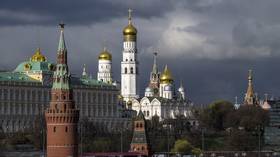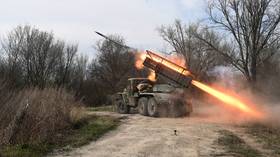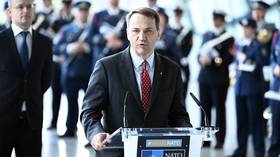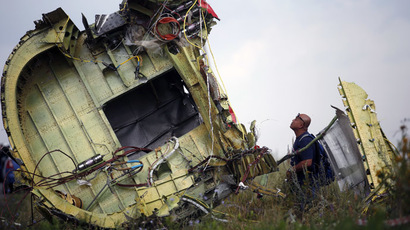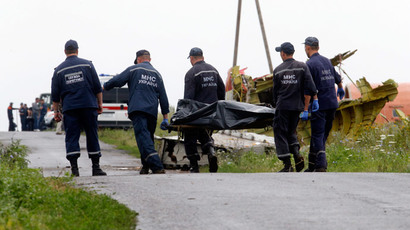Ukrainian Su-25 fighter detected in close approach to MH17 before crash - Moscow
The Russian military detected a Ukrainian SU-25 fighter jet gaining height towards the MH17 Boeing on the day of the catastrophe. Kiev must explain why the military jet was tracking the passenger airplane, the Russian Defense Ministry said.
Follow Malaysia Airlines MH17 plane crash in Ukraine LIVE UPDATES
“A Ukraine Air Force military jet was detected gaining height, it’s distance from the Malaysian Boeing was 3 to 5km,” said the head of the Main Operations Directorate of the HQ of Russia’s military forces, Lieutenant-General Andrey Kartopolov speaking at a media conference in Moscow on Monday.
“[We] would like to get an explanation as to why the military jet was flying along a civil aviation corridor at almost the same time and at the same level as a passenger plane,” he stated.
“The SU-25 fighter jet can gain an altitude of 10km, according to its specification,” he added. “It’s equipped with air-to-air R-60 missiles that can hit a target at a distance up to 12km, up to 5km for sure.”
The presence of the Ukrainian military jet can be confirmed by video shots made by the Rostov monitoring center, Kartopolov stated.
At the moment of the MH17 crash an American satellite was flying over the area of eastern Ukraine, according to Russia’s Defense Ministry. It urged the US to publish the space photos and data captured by it.
‘Ukrainian Buk missile system transported to militia-held area’
In addition, MH17 crashed within the operating zone of the Ukrainian army’s self-propelled, medium-range surface-to-air ‘Buk’ missile systems, the Russian general said.
“We have space images of certain places where the Ukraine’s
air defense was located in the southeast of the country,”
Kartapolov noted.
The first three shots that were shown by the general are dated
July 14. The images show Buk missile launch systems in about 8km
northwest of the city of Lugansk – a TELAR and two TELs,
according to the military official.
Another image shows a radar station near Donetsk.
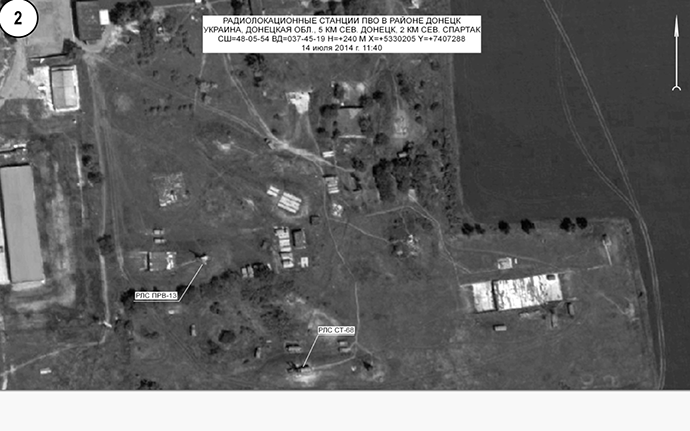
While the third picture shows the location of the air defense systems near Donetsk, he explained. In particular, one can clearly see a TELAR launcher and about 60 military and auxiliary vehicles, tents for vehicles and other structures, he elaborated.
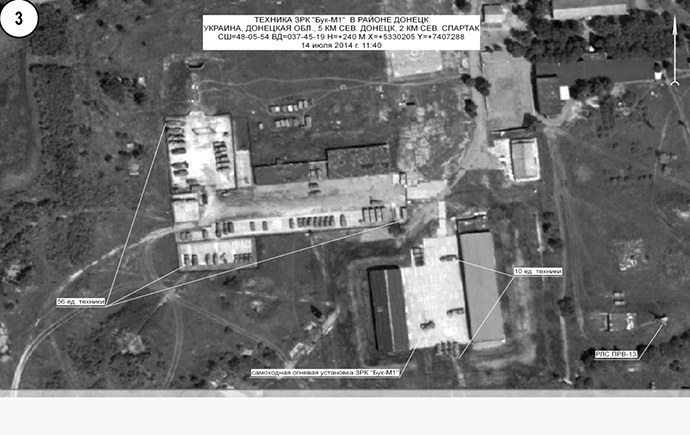
“Images from this area were also made on July 17. One should notice that the missile launcher is absent [from the scene]. Image number five shows the Buk missile system in the morning of the same day in the area of settlement Zaroschinskoe – 50km south of Donetsk and 8km south of Shakhtyorsk," the Kartapolov said.
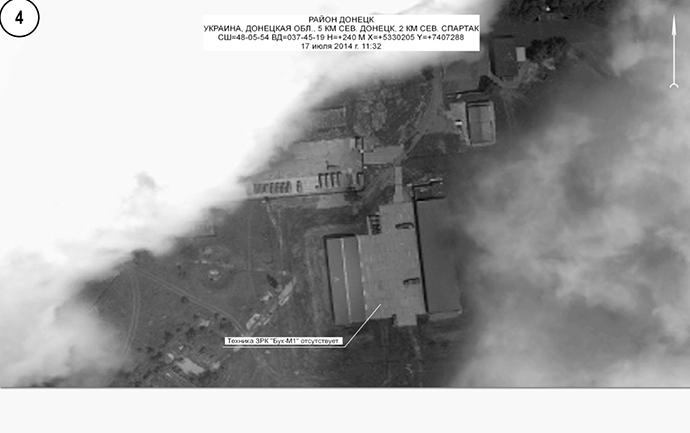
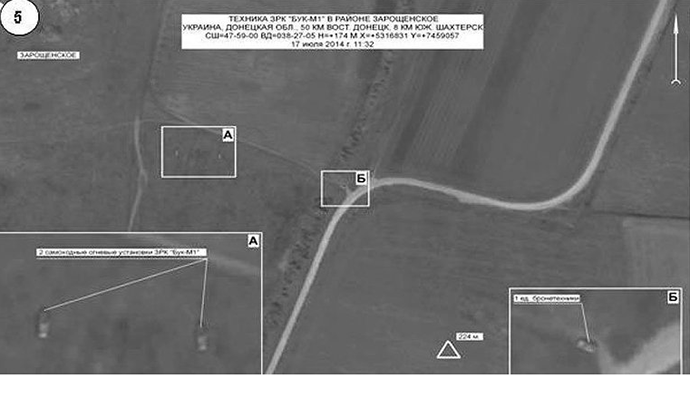
The question that has to be answered is why the missile system
appeared near the area controlled by the local militia forces
shortly before the catastrophe, he stated.
Images taken on July 18 show that the missile systems left the
area of the MH17 crash, the military official said.
Kartapolov also pointed to the fact that on the day of the plane
crash Ukraine’s military increased activity on the part of
Ukraine’s Kupol-M1 9S18 radars, which are part of the Buk system.
"..there were 7 radars operating on July 15, 8 radars operating on July 16, and 9 radars operating on July 17 in the area. Then, starting with July 18, the intensity of radar activities radically decreased, and now there are no more than two or three radars operating a day. The reason behind this is yet to be found."
In response to Moscow’s evidence, Kiev said on Monday it had
proof the missile that brought down a Malaysian airliner last
week came from Russia.
"There is evidence that the missile which struck the plane
was fired by terrorists, who received arms and specialists from
the Russian Federation," spokesman for Ukraine's Security
Council Andrey Lysenko told a news conference. "To disown
this tragedy, [Russia] are drawing a lot of pictures and maps. We
will explore any photos and other plans produced by the Russian
side."
Ukrainian President Petro Poroshenko said on Monday that Kiev has “strong evidence” of the causes of the MH17 crash.
“We know exactly the place [the surface-to-air missile was] launched, we know exactly the place where it hit the civilian plane and the place where the plane crashed.”
Kiev is ready to hand the information to the international investigation commission, according to the presidential press-service.


